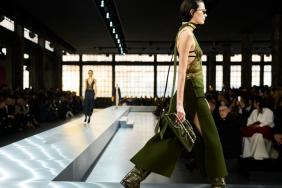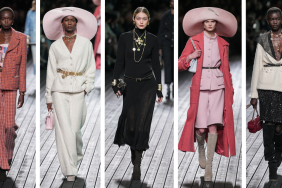Change is coming to New York Fashion Week. Models won’t step foot on the runway until February 2016 but it’s already shaping up to be a season unlike any other. Rebecca Minkoff announced this week that it will show a consumer-facing fashion show for the first time in the brand’s history. Consumers will make up almost 50 percent of the audience and models will wear the Spring 2016 collection, currently in stores. Traditionally, designers show collections six months in advance, sending Fall 2016 down the runway in February, though the clothes won’t hit stores until September. Minkoff believes that’s a dying model and we’re inclined to agree.
The CFDA commissioned a study by Boston Consulting Group to determine if a consumer-facing Fashion Week is a step in the right direction. Here are five reasons why we think the current runway schedule needs to change its focus towards the consumer model.
1. It Will Eliminate Consumer Fatigue
No matter how rave their reviews or popular their Instagram photos, a brand can’t thrive without revenue. The current Fashion Week model actually hurts sales by bombarding customers with product images six months early via social media and the Internet. By the time clothes hit the racks, consumer fatigue has set in, which in turn negatively impacts sales. Consumers want to buy designs as soon as they hit the runway, not six months later.
In an effort to rectify this problem, Proenza Schouler decided not to release images or reviews of its Pre-Fall collection until the items become available in April. And Rebecca Minkoff will send an in-store collection down the runway next season. As Ken Downing, senior vice president, fashion director of Neiman Marcus, told WWD, “The history of fashion shows was to show the buyers and the press the message of the season. But technology has utterly changed everything in our industry. That customer continues to follow Instagram and Twitter and watches the live-stream of fashion shows. When they are seeing clothes, they are less aware of seasons. What they are seeing, they want.”
2. It Allows Brands to Engage With Customers Directly
“Real people” were invited to Givenchy’s Spring 2016 show. The brand gave out 820 seats to the public, allowing them to view the new collection alongside celebrities like Nicki Minaj and Kim Kardashian. In recent seasons, consumers have enjoyed unprecedented access to Fashion Week through invites, contests and social media posts. The logical next step is for brands to prioritize consumers entirely. They’ve shown a demonstrated interest in Fashion Week, so why not offer consumers the best seat at the table? It’s a no-brainer, especially since it leads to more revenue for the brand.
3. Editors Will Finally Be Able to See the Clothes
Despite the buzz surrounding Fashion Week, most editors and buyers have become disillusioned with it. With crowds swarming outside and theatrics inside, it’s hard to focus on the actual fashion. To be fair, spectacle makes sense: it garners press hits, creates visibility and ultimately drives sales. But for buyers looking for items to sell at retail, it’s all one huge distraction. WWD reports that London designer Thomas Tait eschewed a runway show in favor of individual appointments. Rebecca Minkoff offered to host private trade viewings in lieu of an industry-facing fashion show. It’s a model that shifts the focus back to the clothes for editors and buyers. And if appointments are scheduled six months in advance, they’ll have enough lead time to actually do their jobs.
4. It Could Lead to More Diversity
A consumer-facing Fashion Week could lead to more diversity on the runway. Several fashion brands are more inclusive in the market than they are on the catwalk. Perhaps if brands are changing fashion shows to appeal to consumers, they’ll cast models who are representative of the plus size or multicultural markets they rely on for sales. By showing clothing that is available in stores, brands won’t have to rely on sample sizes, which only fit the ultra-slim models we’re accustomed to seeing on the runway. Of course, this is wishful thinking as we barely see diversity in ads, but it would be a welcome change.
5. It Will Hurt Copycats
As Diane von Furstenberg told WWD, “The only people who benefit [from the current model] are the people who copy.” Fast fashion brands have made a killing copying items on the runway (ahem, Zara) and placing them in stores quicker than designers. Even Yeezy Season 1 was reportedly knocked off by fast fashion brands before it hit stores. Of course, the new Fashion Week system won’t stop mass retailers from ripping off pieces from the runway. But now that you can buy the original designs right away, the demand for knockoffs won’t be as high.
To be fair, the new Fashion Week model has its disadvantages. Designers may bypass Fashion Week altogether, like Thakoon, who is not on the calendar to show in February. Consumers could lose interest now that Fashion Week is less elitist and more accessible. Fashion Week could become a spectacle on par with Fashion’s Night Out as brands vie for the public’s attention. But as it stands, the antiquated system is no longer working. Social media pulled back the curtain and it was only a matter of time before consumers flooded the stage.








